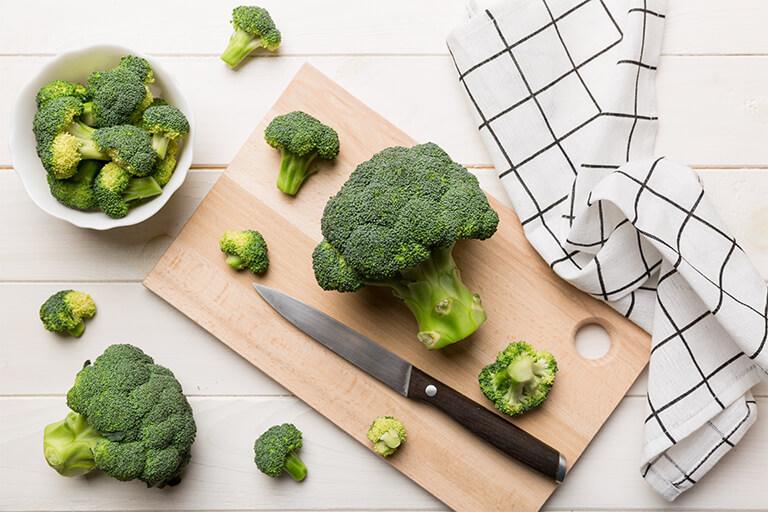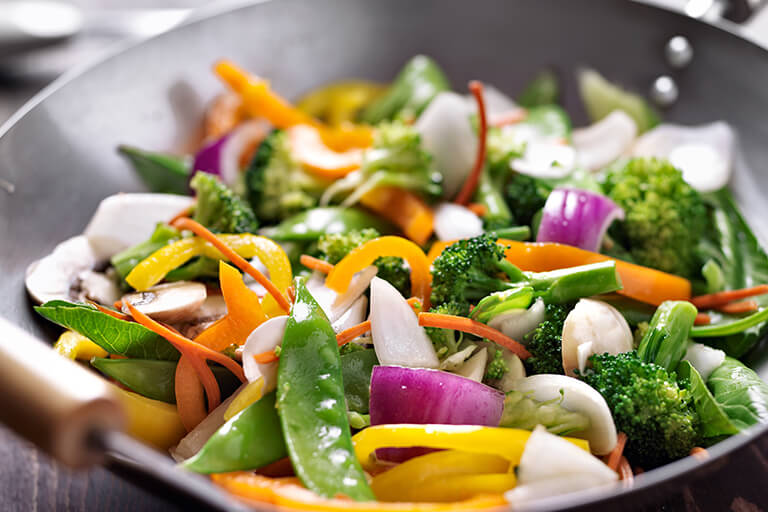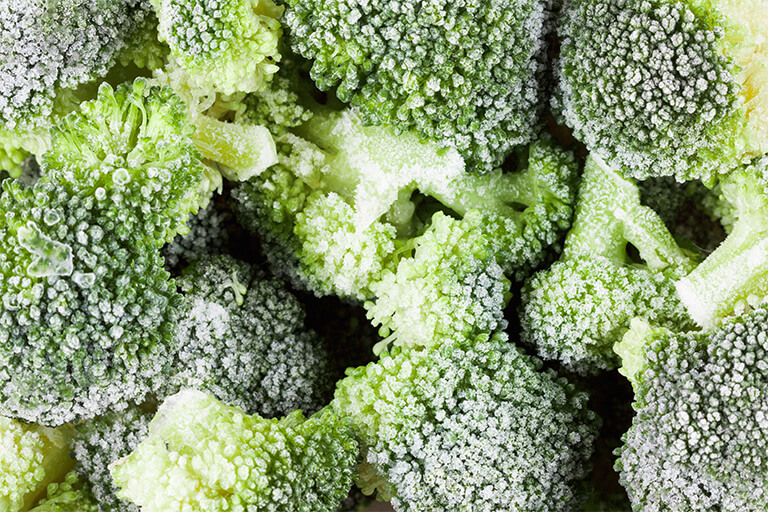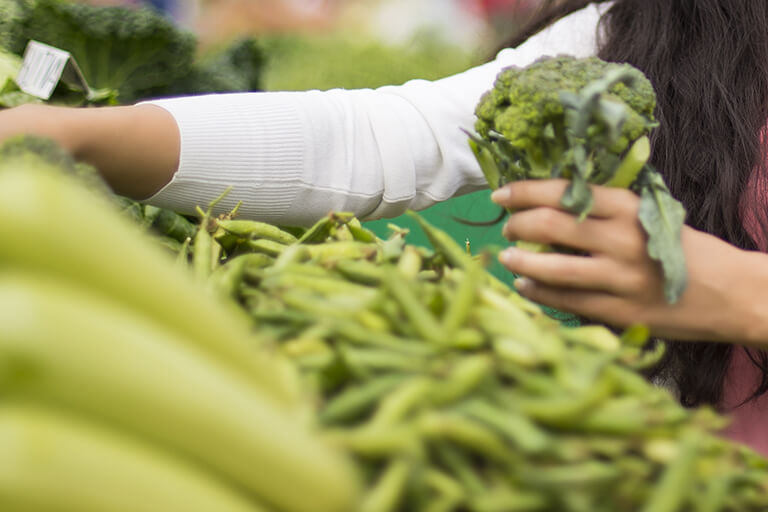Broccoli is often nicknamed “little trees” thanks to its light green stalk and tightly clustered, dark green flowering head. It grows surrounded by grey-green leaves that are also edible but are often removed before being sold commercially. The word broccoli means “little arms” or “little shoots” in Italian, and it’s believed that the vegetable originated there. This affordable veggie requires little prep beyond washing and trimming and can be sliced, chopped, or left whole.

Often reviled by kids and loved by wholesome food enthusiasts, broccoli is a green vegetable with quite a reputation. The treelike stalks are part of the cabbage family and are grown and eaten all over the world. About 75% of the world’s production of broccoli comes from China and India. The plant thrives in cool weather, making it a winter and spring vegetable, but it’s grown year-round in places like California. It can be eaten raw, steamed, sautéed, stir-fried, roasted, grilled, fried, or pureed.
Broccoli has been considered a very valuable food by the Italians since the Roman Empire, but when first introduced in England in the mid-18th century, broccoli was referred to as “Italian asparagus.”
Due to the many ways it can be cooked, as well as all of the wholesome benefits, broccoli has tripled in consumption over the past 30 years.

How to Cook Broccoli
Broccoli is an extremely versatile vegetable with many different methods to cook and prepare it. Before preparation, rinse and dry it and, if needed, trim any brown off of the cut stem. Some recipes call for peeling the stalk while others only use the florets. Every part of broccoli sold in the grocery store is edible, so be sure to save unused parts for another recipe. For example, leftover stalks can be cooked and pureed to make soup.
To break up the head of your broccoli into florets, take a sharp knife and cut away the base of the flowering stalks, separating them from the main, thick stalk. Trim into smaller florets if desired. Raw broccoli florets can be served as part of a crudités platter or used in broccoli salad. The florets can also be cooked, as can the stem. Broccoli can even be cooked whole (although it is typically chopped up for even cooking) or sliced into thick slices called “steaks.”

How to Store Broccoli
Store fresh broccoli loosely wrapped in a storage bag in the crisper drawer of your refrigerator for up to five days. Depending on how long the stalks have been sitting in the grocery store, they may begin to turn limp before the five days or so, so prepare them as soon as possible, especially if serving raw.
Cooked broccoli will keep for three days in the fridge in an airtight container. If kept properly frozen, frozen broccoli will keep for 6 to 12 months.
To freeze fresh broccoli, cut washed and dried broccoli into florets and chop the stalks. Steam for about 5 minutes. Plunge into ice water to stop the cooking and retain their green colour. Drain thoroughly and place in sealed bags or containers.
You can also pickle broccoli among any other excess vegetables you have in your fridge.

Where to Buy Broccoli
Find broccoli in your local grocery store sold in single stalks, bundles, or bags. Already trimmed florets can be found in bags, and frozen florets are available in the freezer section.
Although readily available year-round, the prime time for fresh broccoli in the Northern Hemisphere is October through April. When selecting broccoli, look for tightly closed, dark green florets and firm, thin stalks. Thick stalks can be woody and are a sign of age. Reject any heads with yellowing or tiny yellow flowers as this is an indication of age.
Broccoli can be grown at home and harvested in the late spring or early fall depending on where you live. In cooler climates, plant where they see the sun. In warmer climates, plant in partial sun to prevent bolting.






